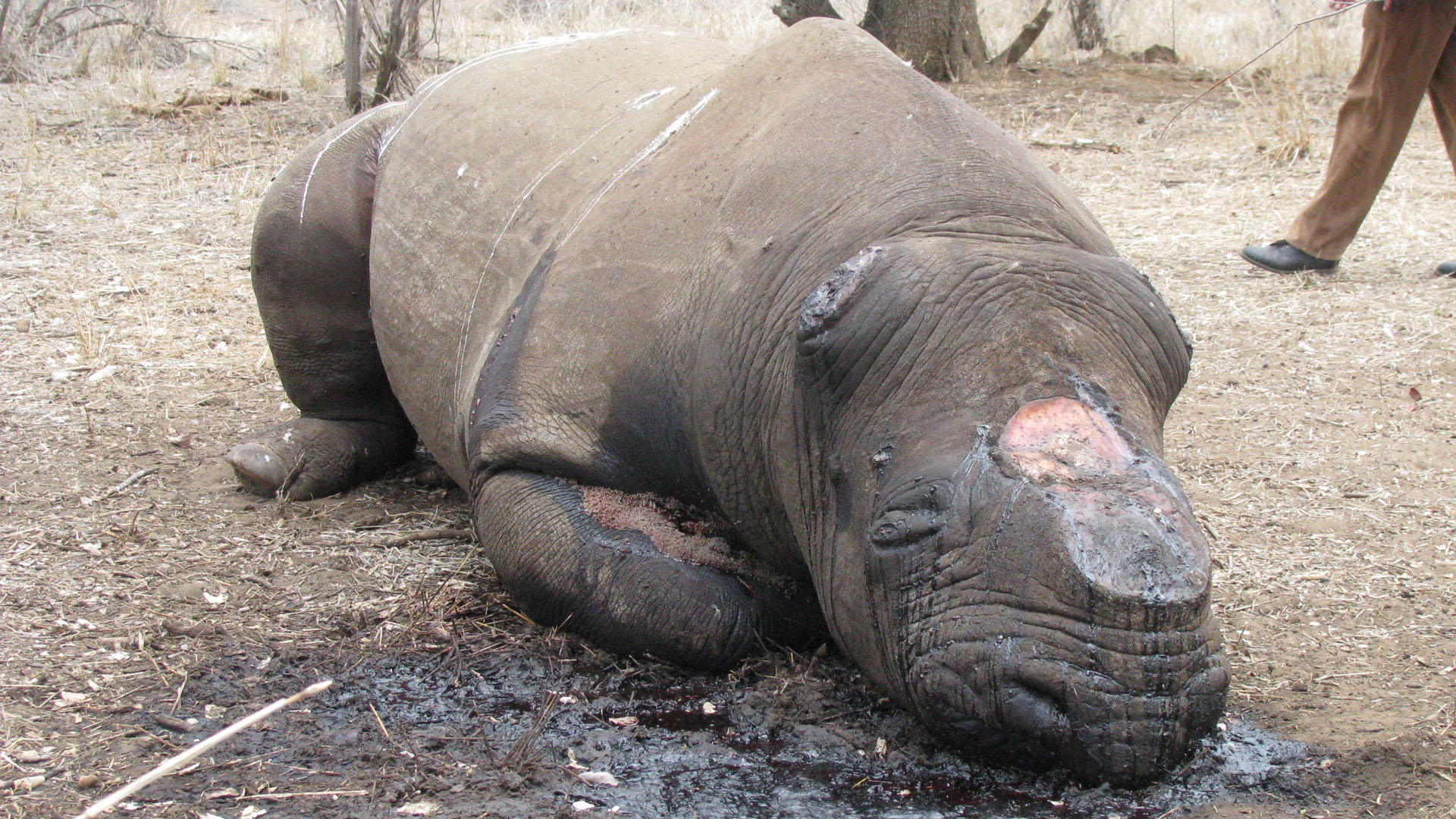In the wake of the brazen killing of a captive white rhino cow and calf within , of all places , the holding bomas at the head quarters of Ezemvelo’s game capture operations in Zululand in May 2017 the question on everyone’s lips – as the usual teeth- gnashing reaction from the conservation world gets underway – is just what kind of anti- poaching plan does the organisation and its managers operate that allows criminals to strike at the very heart of Zululand’s rhino security, and what is more, get away with it ?
Indignant claims that it must have been an “inside job” or at very least a collusive arrangement between outside criminals and someone with legitimate access or knowledge of the bomas, are peripherally unhelpful to understanding the reality of what is actually taking place – not simply here in Africa’s rhino heartland but also around the world. Have we forgotten that a rhino was poached in the Paris zoo or that a rhino orphanage north of Durban was attacked and the pathetically vulnerable, semi tame rhino it was caring for, slaughtered ?
Say what you like , blame who you will ; Chinese criminal syndicates, corrupt government officials, “ bent” wildlife officers , lousy , incompetent police ,poor prosecutorial procedures – the list goes on but the reality after nearly ten years and some 4 000 rhino poached – enough to cover a football stadiums playing field layered two-deep in carcases – is that the war is being lost.
More to the point the penny must surely be finally dropping with a resounding thud among those who for so long have been insisting that the battle can ,and must, be won through defensive actions and a strange thing called “demand reduction” in the Far Eastern consumer markets. A kind of marketing campaign designed to persuade consumers that eating horn for medicinal purposes or possessing status symbol rhino horn artefacts is an uncivilised habit that will lead to the extinction of a species most believers in the curative myths surrounding a horned creature under siege in a far off continent have not the foggiest notion about.
No, let us be quite clear – no beating about the bush with fancy technology, unsustainable militaristic “ final” solutions and hand- wringing despair at the on- going attempts to prevent poaching ; the criminals will get to them no matter where they might be- in the wild, in so-called secure places name any place you want to and name any government you like which has the integrity and political will to put in place effective safeguards . No matter where or how rhino are protected, no matter what kind of deterrent measures are deployed here is a wild animal which carries on its nose the curse of an ancient anatomical feature more valuable than gold itself.
Move the rhino to safe zones ( Intensive Protection Zones or IPZ’s) in ,and outside ,our borders ( even Australia is bidding enthusiastically) is a popular solution urged by many as at least an interim measure until such time as a final solution has been found . Yes, one can employ this tactic but beware that in the process a whole ecological relationship in biodiversity management in a natural system can be distorted – severed in fact – and one more thing, nothing is more traumatic than to subject a large mammal like a rhino to immobilising drugs and translocation to a distant place away from its ancestral home. Its not nice . Those of us familiar with the early movement of rhino to far off places in Africa and overseas can attest to that !
“Cut off the horns” is another popular cry, that will at least render the animal safe from poachers – a kind of last ditch, Alamo solution heard from many conservationists including we are told Ezemvelo itself. Sure, we can do just that but we need to be absolutely clear on three fronts.
Firstly, the horn base at current prices is worth at least R30 000 so don’t think that poachers won’t resort to killing dehorned animals. Secondly, be prepared to conduct the same immobilisation in three years time – horn grows back . Do you have the funds to do, say, iMfolozi’s 1 600 population in three year interval repeat operations? Finally, cutting off the horn is a disfiguring act of desperation that many will find repugnant and , perhaps, the source of a very, very pertinent question.
It begs the question ; if we have the know-how, the rhino resources in private ownership and if we organise ourselves properly in a brave new attempt at creating a deterrent which will, if nothing else, put a brake on this hideous repeat of a march to extinction for Gods sake lets at least have the guts to try it.
Bring a regulated ,sustainable legal market for horn into existence – it’s a final throw of the dice , one infinitely better , than sitting and waiting for the next violation of our precious animal kingdom, in this instance South Africa’s crown jewel.


